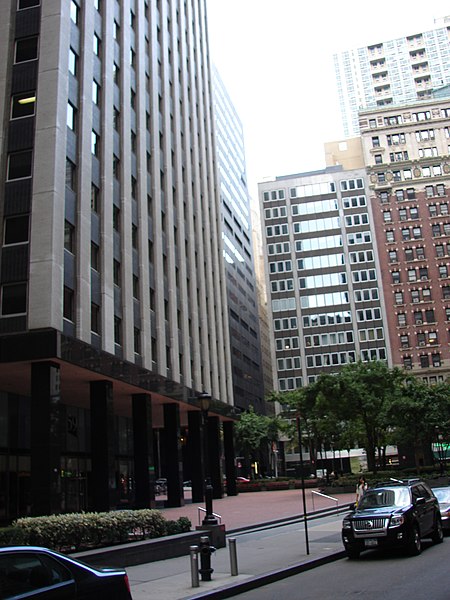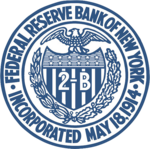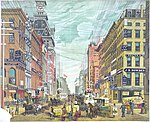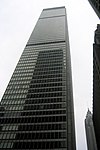Home Insurance Plaza

Home Insurance Plaza is a 630 ft (190 m) tall skyscraper at 59 Maiden Lane in the Financial District of Manhattan, New York City. It was completed in 1966 and has 44 floors. Alfred Easton Poor designed the structure, while the plaza was redeveloped in 1987 by Kohn Pedersen Fox. The plaza is the home of Liberty, a 75-by-50-foot (23 m × 15 m) mural by Julie Harvey. Simple in its concept, it illustrates that New York's present was built upon the foundations its forefathers placed many years ago. The Statue of Liberty is reflected in the mirrored facade of a skyscraper. Early 19th century New York emerges revealing the cobblestone streets, horses and carriages, gentlemen with top hats, and ships in the seaport. Harvey has also included the old shipping barrels, lamp posts and even pigs that ran freely around Lower Manhattan. The Liberty mural was presented to the community as a visual expression of the foundations on which New York was established.
Excerpt from the Wikipedia article Home Insurance Plaza (License: CC BY-SA 3.0, Authors, Images).Home Insurance Plaza
John Street, New York Manhattan
Geographical coordinates (GPS) Address Nearby Places Show on map
Geographical coordinates (GPS)
| Latitude | Longitude |
|---|---|
| N 40.708611111111 ° | E -74.007777777778 ° |
Address
66 John Street
John Street 66
10038 New York, Manhattan
New York, United States
Open on Google Maps









